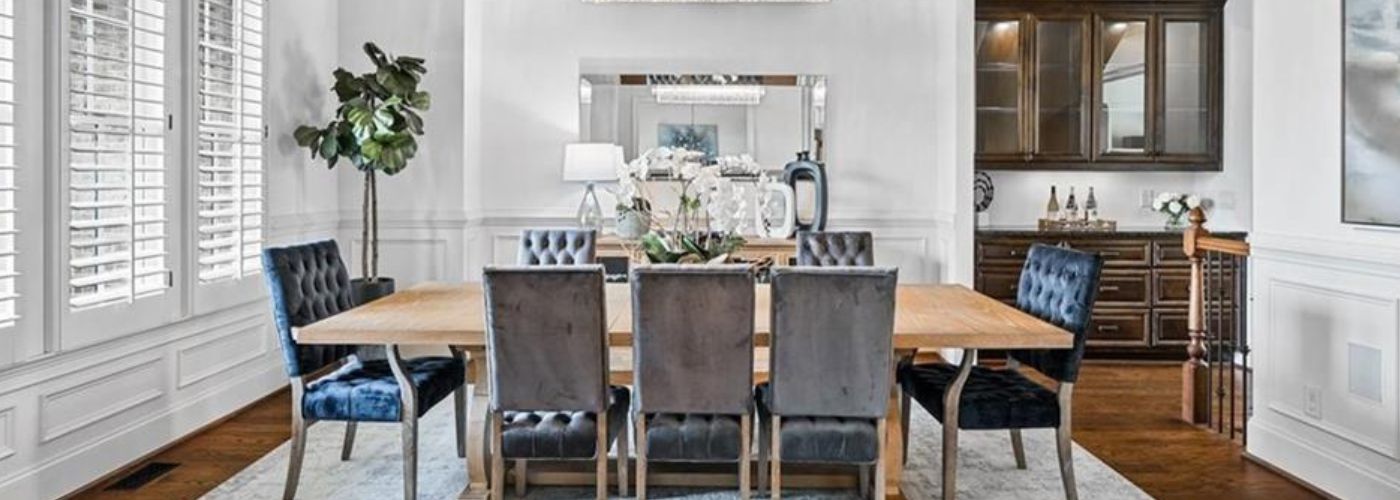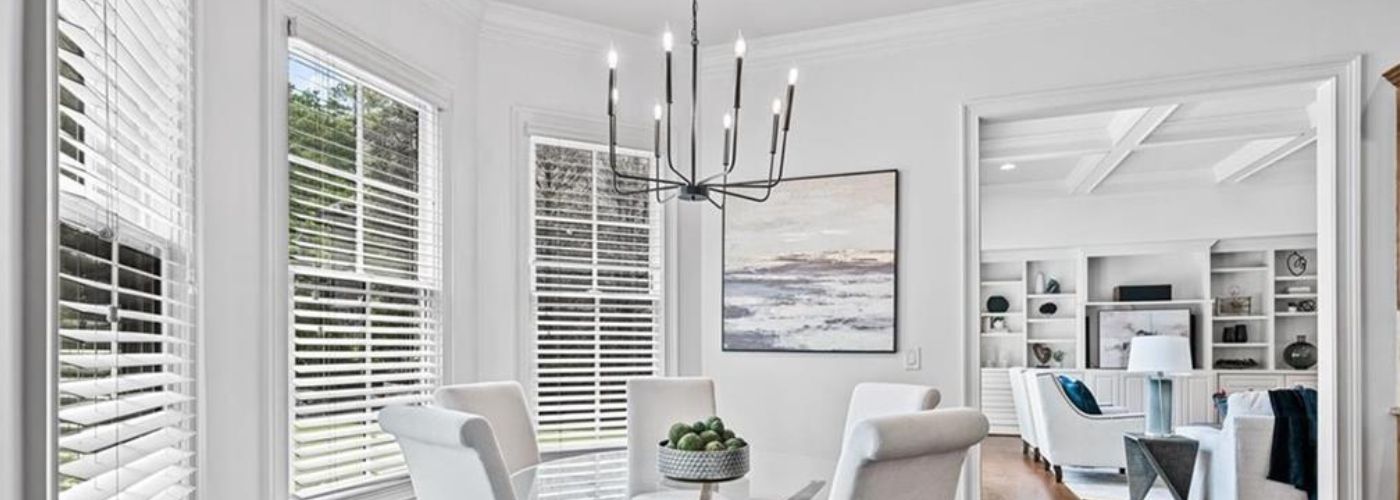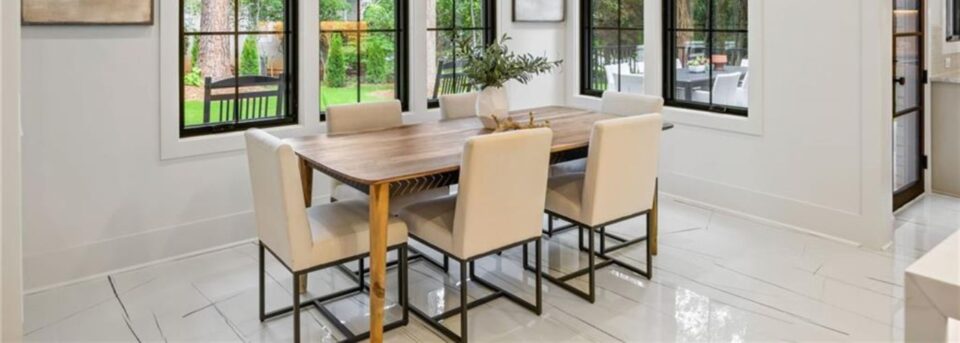How To Stage A Dining Room

Welcome, homeowners and enthusiasts of aesthetically pleasing spaces! Today, we’re delving into the art of staging, and more specifically, how to transform your dining room into a captivating focal point.
If you’re considering selling your home or just want to enhance its visual appeal, professional staging can make a significant difference. Let’s explore the key elements of staging a dining room to make it inviting and unforgettable.
How To Stage A Dining Room Table
The dining room table is the centerpiece of the space, and staging it effectively can create a lasting impression. With the right care and attention (and some helpful tips from professional home staging consultation), you can transform this space from simply functional into a feature that potential homebuyers will love!
Keep your table clean and clear of clutter. While a centerpiece can help add personality to the space, always make sure to leave enough room for potential buyers to visualize their own unique style. Keep the area around the table clear and easily-walkable as well. This will help create an improved sense of space and convenience!
Here’s how to elevate your dining room table staging:
How High Should A Dining Room Light Be Above A Table?
The height of your dining room light fixture plays a crucial role in setting the ambiance. Ideally, the bottom of the light should hang approximately 30 to 36 inches above the tabletop. This range ensures proper illumination without obstructing the view across the table. Consider the style of your light fixture and the overall design theme of your dining room when determining the perfect height. As with our tips on how to stage a home office, remember that lighting adds both functionality and personality to a space!
Pro tip: Install a dimmer switch to adjust the brightness, allowing you to create a cozy atmosphere for intimate dinners or a well-lit space for entertaining guests!
How To Set A Dining Room Table For Staging
A well-set dining room table enhances the overall appeal of the space. Follow these steps for a perfectly staged dining table:
Start with a Clean Slate:
Begin by clearing the table of any clutter. A clean surface provides a fresh canvas for your staging efforts.
Use Elegant Tableware:
Invest in quality tableware to elevate the look. Consider coordinating dinnerware, flatware, and glassware for a cohesive and sophisticated appearance.
Add a Centerpiece:
Place a striking centerpiece in the middle of the table. This could be a vase of fresh flowers, a bowl of decorative fruits, or a stylish candle arrangement. Ensure it complements the overall theme and color scheme of the room.
Set Places with Care:
Arrange place settings thoughtfully. Use placemats or a table runner to add texture, and fold napkins creatively for an added touch of elegance. Consider incorporating charger plates for an extra layer of sophistication.
Balance Heights:
Vary the height of items on the table to create visual interest. Taller elements like candle holders or vases should be strategically placed to avoid obstructing views across the table.
Personalize with Details:
Add personal touches such as name cards or small favors at each place setting. This not only enhances the staging but also makes the space feel more inviting.
Remember, just as with staging a living room coffee table, less is often more. Avoid overcrowding the table, allowing potential buyers or guests to envision their own gatherings in the space.
Do I Need A Rug Under My Dining Room Table?
The choice of whether to place a rug under your dining room table depends on various factors, including the size of the room, the table, and your stylistic preferences. Here are considerations for deciding whether a rug is the right choice:
Room Size:
In a spacious dining room, a rug can define the dining area and add warmth. However, in smaller rooms, it’s essential to choose an appropriately sized rug to avoid making the space feel cramped.
Table Size:
The rug should extend beyond the chairs when they are pulled out to ensure a cohesive look. Ideally, there should be at least 24 inches of rug space on all sides of the table to accommodate chair movement.
Style and Design:
The style of the rug should complement the overall design of the dining room. Consider factors such as color, pattern, and texture to enhance the visual appeal.
Maintenance:
Be mindful of the practical aspects of rug maintenance, especially in a dining area where spills are more likely to occur. Opt for easy-to-clean materials that can withstand regular use.
In summary, a well-chosen rug can anchor the dining area and enhance the overall aesthetic, but it’s crucial to consider the size and style carefully!
Staging your dining room is a delightful endeavor that can significantly impact the overall appeal of your home. By paying attention to details such as the height of the dining room light, the artful arrangement of table settings, and the strategic placement of a rug, you can create a dining space that captivates and inspires. Whether you’re selling your home or simply refreshing its look, staging is a powerful tool for making a lasting impression. Happy staging!





